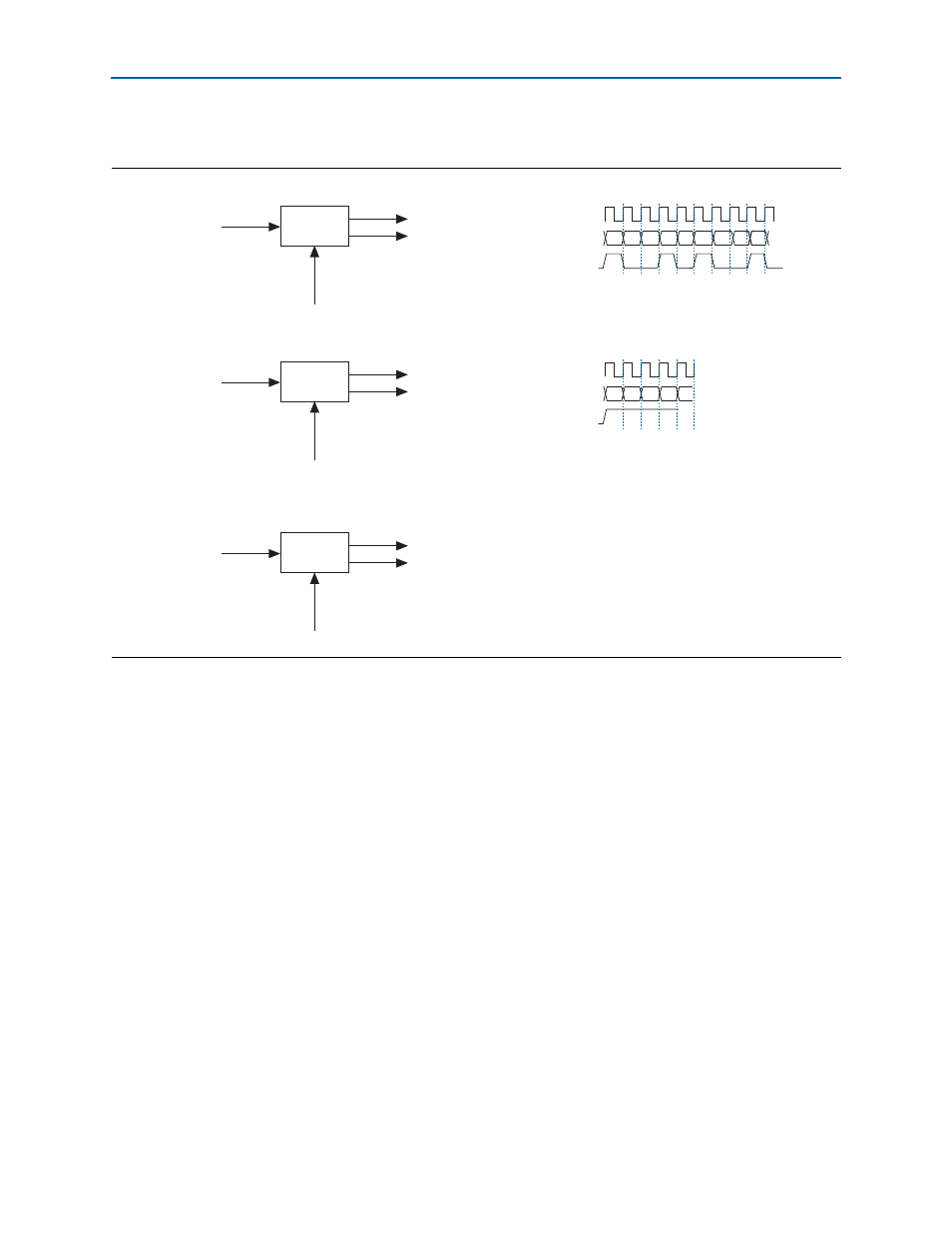Transmitter transceiver interface, Transmitter transceiver interface –23, Transmitter retiming – Altera Serial Digital Interface (SDI) MegaCore Function User Manual
Page 53: Optional two-times oversampling for hd

Chapter 3: Functional Description
3–23
Block Description
February 2013
Altera Corporation
Serial Digital Interface (SDI) MegaCore Function
User Guide
shows the receiver clocks for different video standards.
Transmitter Transceiver Interface
Altera provides a transceiver interface, which interfaces the transceiver to the SDI
function. The transceiver interface implements the following functions:
■
Retiming from the parallel video clock domain to the transceiver transmitter clock
domain
■
Optional two-times oversampling for HD
■
Transmitter oversampling for SD
Transmitter Retiming
The txdata parallel data input to the transceiver must be synchronous and phase
aligned to the tx_coreclk transceiver clock input. SD-SDI (and optionally HD-SDI)
requires a retiming function, because of the oversampling logic. The transmitter uses a
small 16 × 20 FIFO buffer for the retiming.
For HD-SDI, the FIFO buffer realigns the parallel video input to the transceiver
tx_coreclk
clock. It is written on every tx_pclk clock, and read on every tx_coreclk.
Figure 3–12. Receiver Clocks
rx_clk
rx_data
rx_data_valid_out
V
V
V
V
SDI MegaCore
Function
74.25 or 74.175 MHz
Serial Data
HD-SDI
rx_clk = 74.175 or 74.25 MHz
rx_data_valid_out
SDI MegaCore
Function
148.5 MHz
Serial Data
3G-SDI or Dual Standard or Triple Standard
rx_clk = 148.5 MHz (or 74.xx MHz when receiving HD)
rx_data_valid_out
rx_clk
rx_data
rx_data_valid_out
V
V
V
V
SDI MegaCore
Function
67.5 MHz
Serial Data
SD-SDI
rx_clk = 67.5 or 74 MHz
rx_data_valid_out
